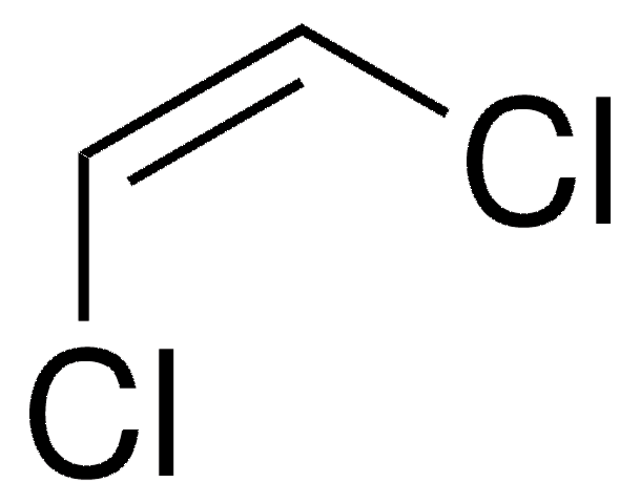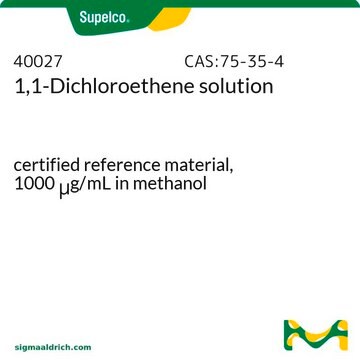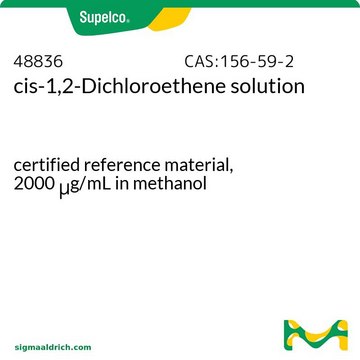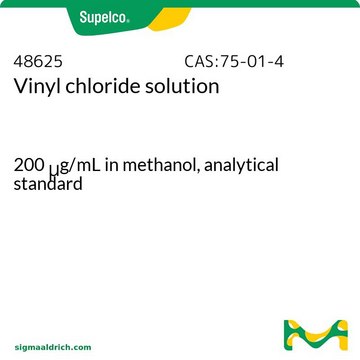Kluczowe dokumenty
163023
1,1-Dichloroethylene
contains 200 ppm MEHQ as inhibitor, 99%
Synonim(y):
Vinylidene chloride
About This Item
Polecane produkty
gęstość pary
3.46 (vs air)
ciśnienie pary
9.68 psi ( 20 °C)
Próba
99%
Formularz
liquid
temp. samozapłonu
968 °F
zawiera
200 ppm MEHQ as inhibitor
granice wybuchowości
15.5 %
bp
30-32 °C (lit.)
mp
−122 °C (lit.)
gęstość
1.213 g/mL at 20 °C (lit.)
temp. przechowywania
2-8°C
ciąg SMILES
ClC(Cl)=C
InChI
1S/C2H2Cl2/c1-2(3)4/h1H2
Klucz InChI
LGXVIGDEPROXKC-UHFFFAOYSA-N
Szukasz podobnych produktów? Odwiedź Przewodnik dotyczący porównywania produktów
Zastosowanie
Hasło ostrzegawcze
Danger
Zwroty wskazujące rodzaj zagrożenia
Zwroty wskazujące środki ostrożności
Klasyfikacja zagrożeń
Acute Tox. 3 Oral - Acute Tox. 4 Inhalation - Carc. 2 - Eye Irrit. 2 - Flam. Liq. 1 - Skin Irrit. 2
Kod klasy składowania
3 - Flammable liquids
Klasa zagrożenia wodnego (WGK)
WGK 3
Temperatura zapłonu (°F)
-2.2 °F
Temperatura zapłonu (°C)
-19 °C
Środki ochrony indywidualnej
Eyeshields, Faceshields, Gloves
Wybierz jedną z najnowszych wersji:
Masz już ten produkt?
Dokumenty związane z niedawno zakupionymi produktami zostały zamieszczone w Bibliotece dokumentów.
Klienci oglądali również te produkty
Nasz zespół naukowców ma doświadczenie we wszystkich obszarach badań, w tym w naukach przyrodniczych, materiałoznawstwie, syntezie chemicznej, chromatografii, analityce i wielu innych dziedzinach.
Skontaktuj się z zespołem ds. pomocy technicznej












